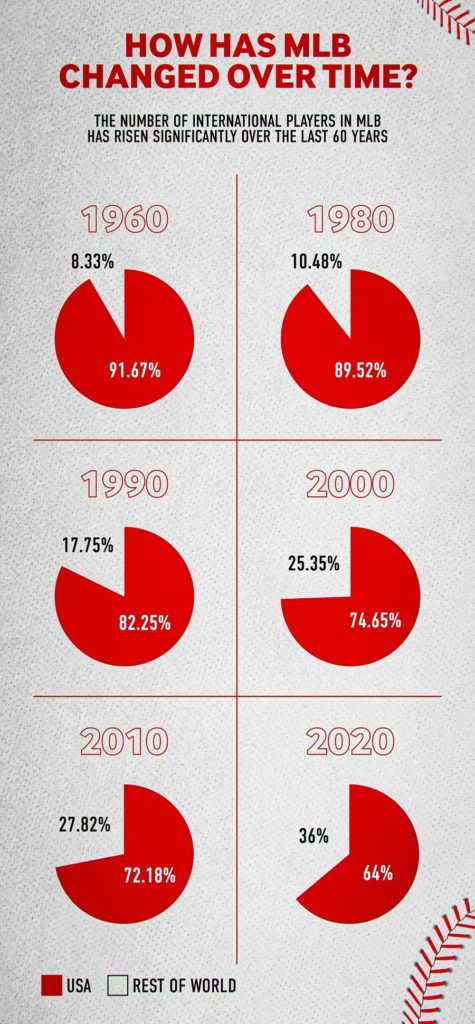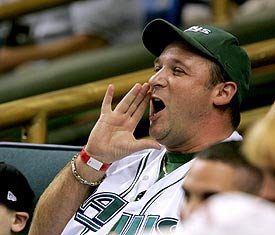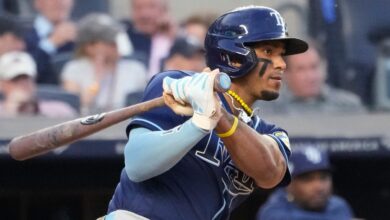
In America, baseball is ranked third after the country’s football and basketball. NFL and NBA are two biggest sports entertainment associations in the USA. In the recent past, baseball was the icing on the cake in American’s rich sporting heritage. It was regarded as a sport from America, by America, for America! However, this long-standing national pride is mooted to end with recent involvement by Latin Americans in the beautiful game. There’s especially, a huge talent beckoning in the 2020 MLB playoffs, where Los Angeles Dodgers are 50% favorites to end the tournament with victory, according to Betway, a renowned bookmarker. Puerto Rico, Cuba, Dominican Republic and Venezuela are four countries with promising upcoming talent in baseball.
While most players in this sport are continental Americans, the role of Latin American players can never be wished away. USA has managed to produce 192 players of the 300 named for the 2020 season alone. This represents 64 percent, which is profoundly an above average representation. Dominican Republic follows in distant second with 35, a representative of 11.6% of opening day roster. Venezuela clocks close third with 31 players starting, a 10% of total player opening day turnout. Puerto Rico and Cuba come in fourth and fifth position by virtue of total representation, with 12 and 11 players respectively. Canada, Japan, South Korea, Colombia, Curacao, Arubia, Netherlands, Germany and Honduras have 4,2,2,3,4,1,1,1,1 players on the opening day sheet, which is about 1% representation for each country, in the tournament. Lithuania, Australia, Taiwan, Peru, Panama, Mexico and Nicaragua are seven other countries represented in the supplemental 40-man roster.

The transformation of MLB is a topic of huge discussion. Models illustrating the levels and dimensions of this change can be attributed to the fact that in 1960, only a measly 8.33% of players in MLB came from overseas. Research from Betway shows that twenty years later, there was a significant rise with the number of overseas players standing at 10.48%.After a decade of development in diversity of this sport, 44 players were included in the opening day line-up, a number that increased up to 72 in the wake of the millennium, equating go 25.3% which is slightly above a quarter of all players drafted on the opening line-up. In the last twenty years, there has been a fluctuation in the growth of these numbers. There was a significant dip in numbers between 2000 and 2010, but this changed this past decade, where 108 players featured on the opening day this season. That’s an encouraging 28% since 1960, a trend that is showing huge promise.
Various reasons have been testament to this commendable transformation. It was the maiden black representation ever, in 1947 when Jackie Robinson became the only black player in the major leagues at then. This was a huge leap towards independence from racial segregation in form of creed, color, religion and ideologies. While light skinned Latino players had been legalized to play in MLB, black Latino Americans had to wait longer because of dogmatic segregation laws. Robinson’s role in major leagues was a huge landmark in embracing diversity in the sport and though the was a slow reaction by other similar players, by mid 1950s, there was a foreseeable future in the Latin Americans’ role.
To put this growth into perspective, in 1951, Chico Carrasquel was a starter in the All Star Game played that year and Luis Aparicio was consequently, named the MLB Rookie of the Year, but that was just the beginning. Zoilo Versailles was named as the First Overseas Most Valued Player, in 1965, four years after which Mike Cueller became the First Overseas CY Young Winner. The best was not yet been and two years later, Roberto Clemente won the First World Series Most Valued Player and the First Overseas Player Inducted into the Hall of Fame another two years later. This felt like a vindication for black players.
The future looks bright for MLB because of a never-ending talent acquisition from the South. In fact, there are huge expectations built around the prospect of playing for major leagues by many upcoming Latino players. The MLB’s role in bridging the unemployment gap cannot be ignored, especially in Dominican Republic, where 60 players are on MLB’s payroll.





